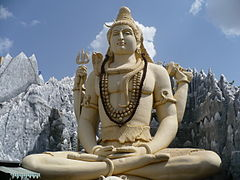Friday, January 22, 2016 | 8:44:00 AM
Maha Shivratri
Maha Shivaratri is a Hindu festival celebrated annually in reverence of the god Shiva. It is the day Shiva was married to the goddess Parvati. It is also known as ‘Shivaratri’
Story of Maha Shivaratri:
After earth's creation was complete, Parvati asked Lord Shiva which devotees and rituals pleased him the most. The Lord replied that the 14th night of the new moon, in the dark fortnight during the month of Phalgun, is his favorite day. Parvati repeated these words to her friends, from whom the word spread to all creation. So the legends signify that this day is the favorite of Lord Shiva and also throws light on his greatness over all other Hindu Gods and Goddesses. Maha Shivaratri also celebrates the night when Lord Shiva performed the 'Tandava', the cosmic dance.
According to another legend of Samudra manthan, Shiva saved the world from the disastrous effects of a poison that emerged as a by product of the churning of the sea (Samudra manthan), by consuming the whole of the poison. Shiva could arrest the poison in his throat by his Yogic powers and it didn't go down his throat. His neck turned blue due to the effect of the poison on his throat and henceforth he is also known as Neela Kantha or The Blue Throated.
Celebration:
The festival is principally celebrated by offerings of Bael leaves to Shiva, all-day fasting and an jagaran. All through the day, devotees chant "Om Namah Shivaya", the sacred mantra of Shiva. Penances are performed in order to gain boons in the practice of Yoga and meditation, in order to reach life's highest good steadily and swiftly.
Rituals of Maha Shivratri:
Following are the rituals to be followed on Maha Shivratri:
- Bathing the Shiva Linga with water, milk and honey. Woodapple or bel leaves are added to, which represents purification of the soul;
- Vermilion paste is applied to the Shiva Linga after bathing it. This represents virtue;
- Offering of fruits, which is conducive to longevity and gratification of desires;
- Burning incense, yielding wealth;
- The lighting of the lamp which is conducive to the attainment of knowledge;
- And betel leaves marking satisfaction with worldly pleasures.
Posted By Beena


